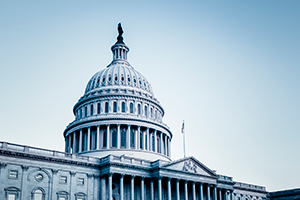Director of Universities UK International (UUKi), Jamie Arrowsmith, has issued an update to the sector regarding various changes due to take place as a result of the government’s immigration white paper, published in May 2025.
UUKi, the sector body representing UK universities’ global interests, has been engaging with officials on the various proposals facing the sector. This includes the government’s ambition to implement an international student levy, shortening the Graduate Route from two years to 18 months, and tightening the Basic Compliance Assessment (BCA) thresholds that universities are held to.
Arrowsmith’s update brought the news that the Home Office has committed to phased implementation of the new BCA thresholds. He also said that the Home Office has also committed to “discretionary exceptions for smaller providers and for institutions that would have passed under current rules”.
The government’s proposal is to raise the minimum pass requirement of each BCA metric by five percentage points, so that a sponsor must maintain a course enrolment rate of at least 95% and a course completion rate of 90% in order to pass the compliance threshold.
However, the change that has most unsettled the sector is the proposal to tighten the visa refusal rate compliance threshold, halving it from 10% to 5%.
Arrowsmith told members that UKVI is now piloting enhanced data sharing to give sponsors more insight into visa refusals – a step UUKi has long called for.
“While this is welcome, we’re clear that further systems and data improvements are needed as a matter of course to support institutions in adjusting to the tighter thresholds,” said Arrowsmith.
The incoming measures also include a traffic-light banding system that rates sponsors on compliance performance, with underperforming institutions facing being placed on a UKVI action plan or a possible recruitment cap.
“We’re also seeking greater clarity on the proposed red-amber-green rating system and will continue to engage through the Education Advisory Group and regular discussions with UKVI and the Home Office,” added Arrowsmith.
A spokesperson for the Home Office told The PIE News: “We strongly value the contribution of international students and recognise their importance to the UK’s world-leading universities. That’s why we’re tightening the rules to ensure those coming here are genuine students and education providers take their responsibilities seriously.”
Communications surrounding curtailing the Graduate Route are “expected imminently”, said Arrowsmith, and UUKi is arguing strongly against the implementation from the January/February 2026 intake, “so that those students are able to access the two-year offer they applied for”.
“We continue to press for written confirmation that PhD graduates will retain three years’ eligibility, and for changes to apply from a set course start date rather than a graduation date, to provide clarity for institutions and applicants,” he continued.
We strongly value the contribution of international students and recognise their importance to the UK’s world-leading universities. That’s why we’re tightening the rules to ensure those coming here are genuine students and education providers take their responsibilities seriously
UK Home Office
News from this week’s Labour Party conference has brought some overdue clarity on the proposed levy on universities’ income from international students. Education Secretary Bridget Phillipson confirmed the measure remains on the table, with the revenue earmarked to fund targeted maintenance grants.
The announcement sparked backlash from sector leaders. Some took aim at the government’s assumptions that universities will be able to simply pass the levy onto international students through higher tuition fees, while others argued that it’s unfair to force international students to essentially pay for domestic maintenance grants.
As the government seeks to implement these reforms, most can be enacted through changes to the immigration rules without requiring an act of parliament — the only exception being the levy on international student fees.






